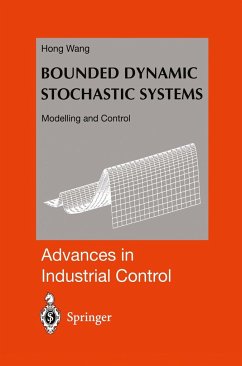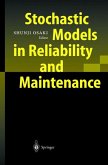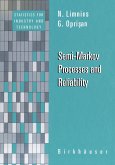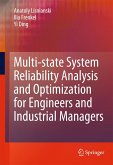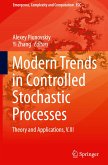In der Brennstoffzelle wird ein großer Teil der im Brennstoff (z.B. Wasserstoff) chemisch gebundenen Energie direkt in elektrischen Strom umgewandelt. Die Funktionsweise und Einbindung dieser Systemkomponente, deren Anwendungsmöglichkeiten unbegrenzt zu sein scheinen und deren Weiterentwicklung weltweit vorangetrieben wird, wirft zahlreiche Fragen auf. Dem Ingenieur, der thermodynamische und verfahrenstechnische Probleme zu lösen hat, werden in diesem Buch die Grundlagen zur Brennstoffzelle und ihrer Prozessintegration vermittelt. Mit den Ansätzen zur Prozessbeurteilung, konstruktiven Durchführbarkeit und wirtschafltichen Bewertung sowie der Beschreibung veröffentlichter Konzepte und Betriebsergebnisse bietet der Autor einen Leitfaden für eigene Problemlösungsansätze und Entscheidungshilfe für das technische Management.
Over the past decades, although stochastic system control has been studied intensively within the field of control engineering, all the modelling and control strategies developed so far have concentrated on the performance of one or two output properties of the system. such as minimum variance control and mean value control. The general assumption used in the formulation of modelling and control strategies is that the distribution of the random signals involved is Gaussian. In this book, a set of new approaches for the control of the output probability density function of stochastic dynamic systems (those subjected to any bounded random inputs), has been developed. In this context, the purpose of control system design becomes the selection of a control signal that makes the shape of the system outputs p.d.f. as close as possible to a given distribution. The book contains material on the subjects of: - Control of single-input single-output and multiple-input multiple-output stochastic systems; - Stable adaptive control of stochastic distributions; - Model reference adaptive control; - Control of nonlinear dynamic stochastic systems; - Condition monitoring of bounded stochastic distributions; - Control algorithm design; - Singular stochastic systems.A new representation of dynamic stochastic systems is produced by using B-spline functions to descripe the output p.d.f. Advances in Industrial Control aims to report and encourage the transfer of technology in control engineering. The rapid development of control technology has an impact on all areas of the control discipline. The series offers an opportunity for researchers to present an extended exposition of new work in all aspects of industrial control.
Over the past decades, although stochastic system control has been studied intensively within the field of control engineering, all the modelling and control strategies developed so far have concentrated on the performance of one or two output properties of the system. such as minimum variance control and mean value control. The general assumption used in the formulation of modelling and control strategies is that the distribution of the random signals involved is Gaussian. In this book, a set of new approaches for the control of the output probability density function of stochastic dynamic systems (those subjected to any bounded random inputs), has been developed. In this context, the purpose of control system design becomes the selection of a control signal that makes the shape of the system outputs p.d.f. as close as possible to a given distribution. The book contains material on the subjects of: - Control of single-input single-output and multiple-input multiple-output stochastic systems; - Stable adaptive control of stochastic distributions; - Model reference adaptive control; - Control of nonlinear dynamic stochastic systems; - Condition monitoring of bounded stochastic distributions; - Control algorithm design; - Singular stochastic systems.A new representation of dynamic stochastic systems is produced by using B-spline functions to descripe the output p.d.f. Advances in Industrial Control aims to report and encourage the transfer of technology in control engineering. The rapid development of control technology has an impact on all areas of the control discipline. The series offers an opportunity for researchers to present an extended exposition of new work in all aspects of industrial control.

